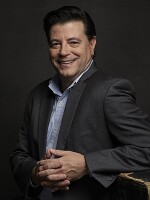Earlier this month, the Centers for Disease Control and Preventiondeclared that influenza is now widespread in Connecticut.
According to figures from the state Department of Public Health, cases of flu-like illnesses in the state are spiking earlier than normal this year. DPH said 355 people tested positive for the flu as of December 16, and 144 people have been hospitalized. Early reports nationwide indicate that the more severe strain of the flu, H3-N2 has been the most prevalent.
As always, a flu shot is the best way to ward off a debilitating and potentially deadly bout of the illness, but media reports claiming that this year's vaccine is only 10 percent effective may have prompted some to avoid the flu shot altogether.
Dr. Ulysses Wu, Chief of Infectious Diseases at St. Francis Hospital said that the 10 percent figure is misleading. The media reports are based on data coming out of Australia, where flu strains can be very different than those in New England according to Wu.
“The actual vaccine effectiveness was overall about 33 percent,” said Wu. “But the predominant circulating strain was something called H3-N2, and there was only a 10 percent effectiveness they only found in Australia, only Australia, which comprised 55 percent of the circulating strains, not all of them.”
Wu said despite the vaccine being only partially effective, the benefits of getting the flu shot far outweigh the risks.
“Overall, the morbidity and mortality that is prevented with the flu vaccine, the benefit is much greater,” said Wu. “It is actually even thought that those who receive the flu vaccine, even if you are exposed to influenza, it may temporize the disease to a certain extent.”
Even though flu season is well underway, it’s not too late to get a flu shot. Wu said the flu season in Connecticut could extend into April.





